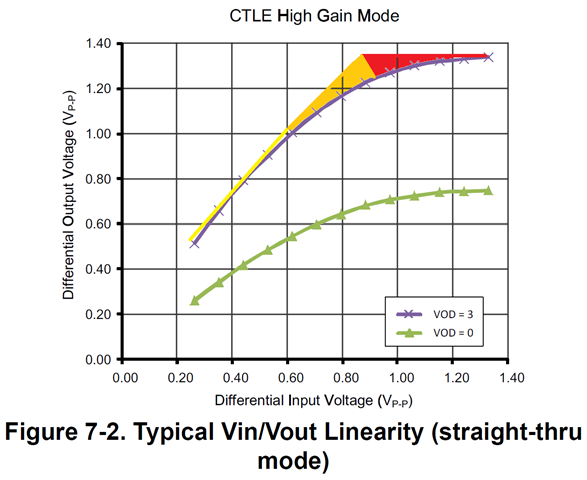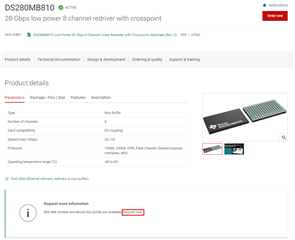Other Parts Discussed in Thread: DS320PR810, TDP20MB421
Tool/software:
Hello,
Let me ask two points regarding Characteristics:
1. Noise
I can see only one definition:
Is it possible to know a little more about the noise? e.g. how dose noise depend on EQ1, EQ2, Gain settings? I am thinking about a cascade of a few TI's high-speed ICs and I would like to know more about noise for getting considered.
2. Crosstalk
I cannot see any mention about crosstalk. Could you please provide information about that (typical and/or maximum values)?
Thank you!
BR
Nikita





